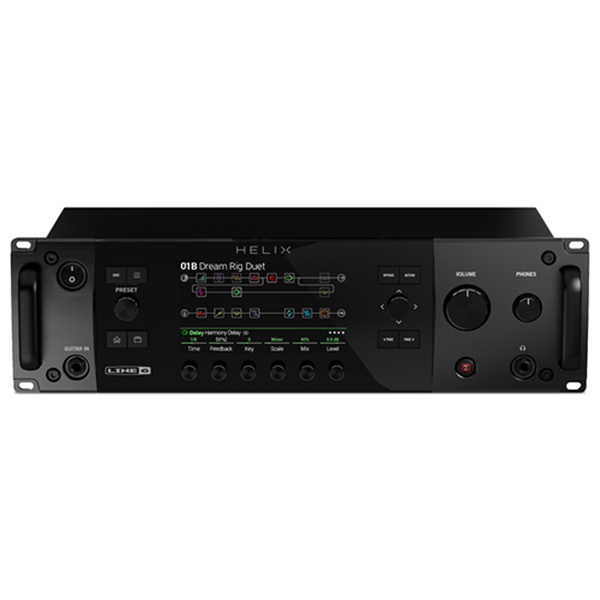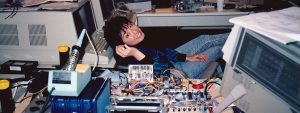Ben Adrian on the Art and Craft of Component Modeling
by Ben Adrian
As we celebrate the 10-year anniversary of Helix, we’re taking a look back—and forward—at what’s made Line 6 amp modeling so innovative. From day one, Helix was built to go beyond simple replication and offer a deeply interactive, authentic playing experience. At the heart of that effort is Ben Adrian, our sound design manager, who’s been with Line 6 since 2011. In this behind-the-scenes look, Ben breaks down the evolution of our modeling approach—from early profiling to the powerful component-level design in Helix—and how we strive to capture not just the sound, but the feel of a real amp.
Hi, I’m Ben Adrian. I’m the sound design manager at Line 6 and I’ve been here since 2011. So there’s a lot of ways you can successfully model an amplifier. There’s profiling and there’s component or circuit modeling.
With profiling, it’s a very accurate representation of the amp at a specific setting. When you try to change the gain or tone of a profile, generally the tone or gain isn’t going to change like it would on an amp in the real world.
Inside a component or small circuit model, the whole idea is that the model will behave like the real amp when you adjust the parameters. So when you actually adjust the presence knob, it’s controlling how the feedback happens in the power amp just like in the real amp. And when you adjust the treble, middle, and bass, it’s adjusting it in an interactive way just like the real amp tone stack would behave.
We’re trying to get the amp models to have the interaction in Helix like they would in the real world. And sometimes that backfired. Sometimes there are sounds that a tube amp makes that are ugly and just kind of unpleasant.

Generally what happens is if that’s in a recording, in the mix you EQ those out, you tweak it, maybe you move the microphone a little bit. And our customers were playing these sounds like, “Oh this is ugly. This is weird. This is strange.”
And that’s one of the reasons we went into making original amp models, because with the software for Helix we can get all the good parts of tube amps that people like and take out all the ugly parts of tube amps that a lot of people just don’t really care for.
When I started at Line 6, it was right after HD500 had come out. So my first models were for an HD500 expansion pack, and I was kind of left alone with the tools to do as I see fit and just to learn and explore. Not a lot of people got to play those models.
Then Helix was being developed and our DSP engineers came up with a whole new way to organize the software tools for amp modeling, and it was much more powerful. So instead of having just a few DSP blocks to manipulate the sound, suddenly it was kind of like this open canvas, and I could order the signal however I wanted and use as many DSP blocks as needed.
The models, rather than becoming a few large changes of sound, became multiple small changes of sound—just like what happens in the real world when a signal goes through an amplifier. It goes through EQs, filters, gain stages. A lot of little things happen to it to shape the sound.
That’s what we tried to do in the amp models—make an analogous version in the digital world with small changes for EQs, tube stages, tone stack controls. We really felt that it gave a much more realistic behavior to the amp models when they’re making the same multiple small changes like the real amp does in the real world.








Leave a Reply
You must be logged in to post a comment.